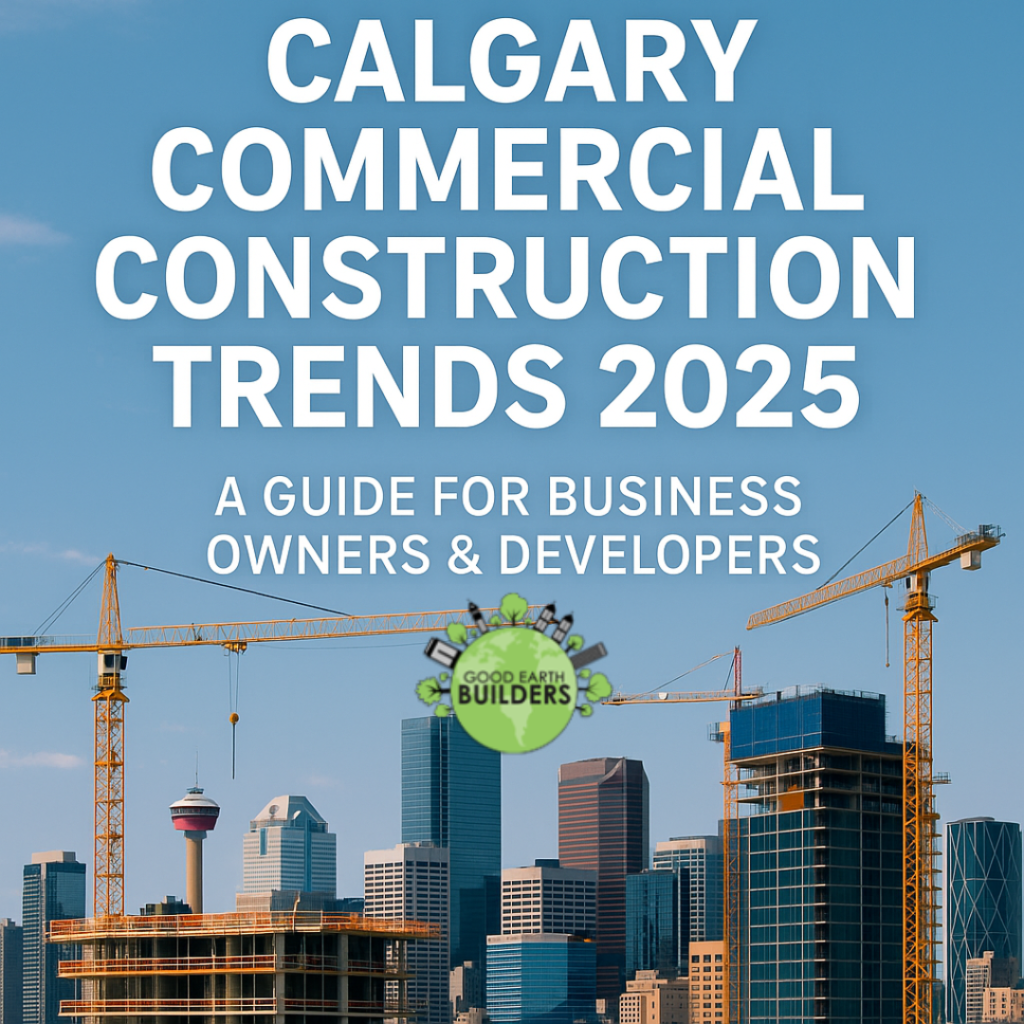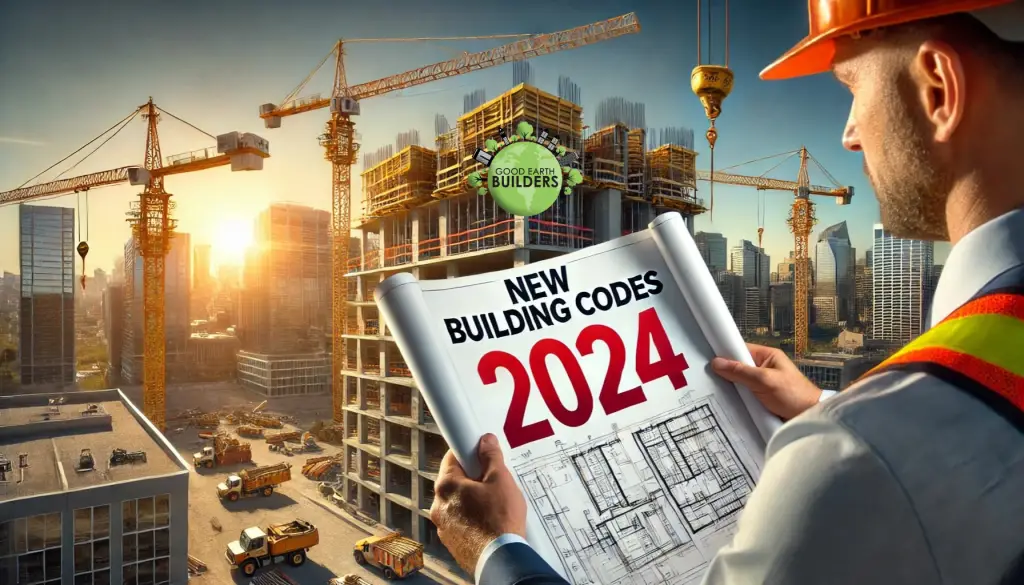Monday, July 7, 2025
Introduction: Calgary’s Construction Renaissance
Calgary’s commercial construction industry is undergoing a seismic shift in 2025, driven by technological innovation, climate resilience mandates, and post-pandemic economic recovery. As the city positions itself as a hub for sustainable development and smart infrastructure, businesses must stay ahead of the curve to maximize ROI and operational efficiency.
This 3,000+ word guide dives deep into the trends redefining Calgary’s skyline, offering actionable insights for developers, investors, and business owners. Whether you’re planning a downtown high-rise, a suburban industrial park, or a retail retrofit, this resource equips you with the knowledge to navigate 2025’s challenges and opportunities.
1. Sustainability: The Backbone of Calgary’s Construction Future
1.1 Net-Zero Energy Buildings
Calgary’s harsh winters and sunny summers make it ideal for net-zero designs. Key strategies include:
- Solar Integration: Rooftop PV panels paired with battery storage (e.g., The Ampersand Building in East Village offsets 90% of its energy use).
- Geothermal Systems: Ground-source heat pumps reduce HVAC costs by 40–60%, widely adopted in projects like University District’s Blueline Community.
- High-Performance Envelopes: Triple-glazed windows and aerogel insulation (R-40 walls) combat Alberta’s -30°C winters.
1.2 Circular Economy Practices
- Material Reuse: The Calgary Municipal Land Corporation (CMLC) mandates 75% recycled content for public projects.
- Deconstruction Over Demolition: Salvaging materials from sites like the old Calgary Stampede grounds cuts landfill waste by 60%.
1.3 Incentives Driving Green Adoption
- Federal Programs: Canada Greener Buildings Fund offers up to $10M for retrofits.
- Municipal Rebates: City of Calgary’s Climate Resilience Tax Credit covers 15% of LEED certification costs.
2. Smart Buildings: Where Technology Meets Efficiency
2.1 IoT-Driven Automation
- Energy Management: AI algorithms in Brookfield Place adjust lighting and HVAC based on occupancy, saving $200K annually.
- Predictive Maintenance: Sensors in RockyView County warehouses alert managers to equipment failures before they occur.
2.2 5G and Connectivity
- Edge Computing: Supports real-time data processing for smart warehouses along the Airport Trail Corridor.
- Tenant Apps: Eau Claire Market’s app lets retailers monitor foot traffic and adjust staffing dynamically.
2.3 Cybersecurity in Smart Infrastructure
- Threat Mitigation: Calgary’s Critical Infrastructure Defence Initiative mandates encrypted systems for utilities and data centers.
3. Adaptive Reuse: Breathing New Life into Heritage Spaces
3.1 Case Study: The Hudson’s Bay Building
- Transformation: Converted into a mixed-use hub with offices, retail, and a rooftop farm.
- Cost Savings: 25% lower than new construction, preserving 80% of the original structure.
3.2 Industrial Conversions
- Warehouses to Workspaces: Inglewood’s Brewery District repurposes old factories into coworking spaces.
- Regulatory Support: Calgary’s Heritage Incentive Program offers grants covering 30% of adaptive reuse costs.
4. Modular and Prefabricated Construction
4.1 Speed and Precision
- Timeline Reduction: Modular office pods (e.g., Seton’s Health Hub) cut construction time by 50%.
- Weather Resilience: Factories like Steelhaus Technologies in Balzac bypass Calgary’s winter delays.
4.2 Cost-Effectiveness
- Bulk Material Purchasing: Savings of 15–20% on steel and concrete.
- Labor Efficiency: Reduced on-site staffing lowers costs by 50–50–100/sq.ft.
4.3 Applications in 2025
- Healthcare: Modular clinics in Marlborough Park built in 12 weeks vs. 8 months.
- Retail: Pop-up stores using prefab units for seasonal markets (e.g., Stephen Avenue Walk).
5. Health, Wellness, and Biophilic Design
5.1 WELL Certification Standards
- Air Quality: MERV-16 filters and CO2 monitoring in Telus Sky.
- Acoustic Comfort: Soundproofing in Beltline’s The Edison reduces noise pollution by 30dB.
5.2 Biophilic Elements
- Living Walls: Bow Valley Square’s indoor gardens improve tenant productivity by 12%.
- Natural Light: Dynamic glass in Fifth & Fifth adjusts tint to optimize daylight.
5.3 Mental Health Focus
- Wellness Rooms: Meditation spaces in Bankers Hall align with post-pandemic workforce demands.
6. Resilient Design for Calgary’s Climate
6.1 Flood Mitigation
- Elevated Foundations: +2m pilings in Bowness and Riverbend communities.
- Permeable Pavement: Reduces runoff in Quarry Park parking lots by 70%.
6.2 Hail and Wind Resistance
- Impact-Resistant Roofing: Class 4 shingles on Deerfoot City retail roofs withstand 50mm hail.
- Reinforced Glazing: Laminated windows in Saddletowne Circle prevent storm damage.
6.3 Seismic Upgrades
- Base Isolation Systems: Mandatory for new high-rises in downtown’s Earthquake Zone 4.
7. Regulatory and Zoning Updates for 2025
7.1 Simplified Permitting
- Digital Submission Portal: Cuts approval times from 12 weeks to 20 days.
- Fast-Tracked Green Projects: LEED Platinum builds receive priority review.
7.2 Mixed-Use Zoning
- Transit-Oriented Development (TOD): High-density projects near Green Line LRT stations (e.g., Shepard and Ogden).
- Infill Incentives: Tax breaks for projects in Killarney and Mount Pleasant.
7.3 Climate Resilience Bylaws
- Carbon Tax Compliance: New builds must offset 20% of emissions via renewables.
- Urban Heat Island Mitigation: Green roofs mandated for buildings over 20,000 sq.ft.
8. Labor and Material Challenges
8.1 Skilled Labor Shortages
- Workforce Development: SAIT’s Construction Futures Program trains 500+ workers annually in green building techniques.
- Robotics Integration: Bricklaying robots on Stoney Trail projects reduce labor needs by 25%.
8.2 Supply Chain Solutions
- Local Sourcing: Alberta-made cross-laminated timber (CLT) replaces imported steel.
- 3D Printing: Calgary’s Additive Manufacturing Hub prints concrete components on-demand.
9. Choosing the Right Commercial Builder in Calgary
9.1 Essential Criteria
- Local Expertise: Knowledge of Calgary’s clay soil (e.g., Coventry Hills) and frost heave risks.
- Proven Track Record: Portfolios with projects like The Guardian (LEED Gold) or New Horizon Mall.
- Transparency: Detailed contracts with clauses for weather delays or supply chain disruptions.
9.2 The Importance of Accreditation
- A+ BBB Rating: Ensures ethical practices and dispute resolution (e.g., Good Earth Builders’ 20-year flawless record).
- CAWIC Certification: Confirms adherence to Alberta’s workplace safety standards.
9.3 Questions to Ask Potential Contractors
- “How do you handle permit delays in Calgary’s new TOD zones?”
- “Can you provide a lifecycle cost analysis for sustainable materials?”
10. Economic Outlook: Calgary’s Construction Boom
10.1 Investment Hotspots
- Downtown Core: Office-to-residential conversions (e.g., First Tower becoming 300 rental units).
- SE Industrial Corridor: $2B allocated for warehouses near Calgary International Airport.
10.2 Post-Pandemic Recovery
- Hybrid Workspaces: Demand for flex offices in Seton and West District.
- E-Commerce Growth: Last-mile logistics centers in Skyview Ranch and Redstone.
Conclusion: Building a Resilient, Smart, and Sustainable Calgary
2025 is a watershed year for Calgary’s commercial construction sector. Businesses that embrace sustainability, technology, and adaptive design will not only thrive economically but also contribute to a city resilient against climate and market shifts.
Why Partner with Good Earth Builders?
As an A+ BBB-rated leader in Calgary’s construction industry, we bring 20+ years of expertise in sustainable, tech-driven projects. From navigating 2025’s zoning laws to implementing cutting-edge smart systems, we ensure your project is future-proof.
📞 Contact Us Today for a free feasibility study and cost-benefit analysis tailored to Calgary’s 2025 trends.




